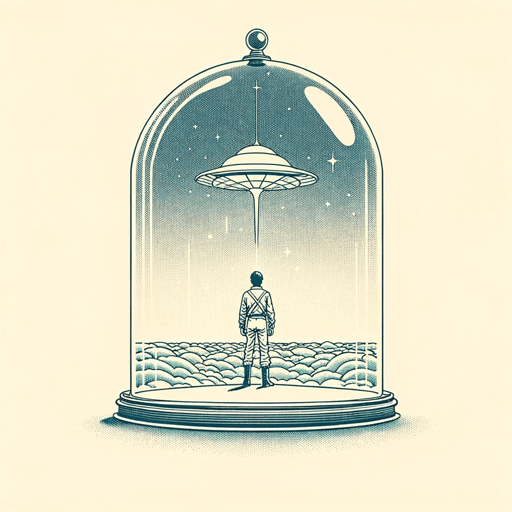99 pages • 3 hours read
Kurt Vonnegut Jr.Cat's Cradle
Fiction | Novel | Adult | Published in 1963A modern alternative to SparkNotes and CliffsNotes, SuperSummary offers high-quality Study Guides with detailed chapter summaries and analysis of major themes, characters, and more. For select classroom titles, we also provide Teaching Guides with discussion and quiz questions to prompt student engagement.
Background
Literary Context: The Metafiction of Vonnegut’s Cat’s Cradle
Metafiction is a genre or style of narrative fiction that draws attention to its own nature as a textual artifact, allowing the author to push back against narrative conventions and examine the role of literature in a character’s life. Though metafictional elements can be traced back to such early works as Geoffrey Chaucer’s The Canterbury Tales, completed in 1400, the genre surged during the postmodern era, as authors became increasingly interested in theoretical issues related to constructed meaning in texts. Examples from this era include Jorge Luis Borge’s Ficciones, John Barth’s Lost in the Funhouse, and Thomas Pynchon’s The Crying of Lot 49.
Among Vonnegut’s works Cat’s Cradle and Slaughterhouse-Five, published in 1969, contain notable metafictional elements. In Slaughterhouse-Five, the novel’s narrator is a recurring minor character who explicitly discusses his reasons for writing the novel. Similarly, in Cat’s Cradle, the narrator discusses the events that led him to write. From the first chapter, John separates his present, Bokononist self from his younger, Christian self. He also frequently interrupts the narrative with asides about things that his character could not have known at the time, especially as he emphasizes the significance of 







Related Titles
By Kurt Vonnegut Jr.

2 B R 0 2 B
Kurt Vonnegut Jr.

Breakfast of Champions
Kurt Vonnegut Jr.

Deadeye Dick
Kurt Vonnegut Jr.

Epicac
Kurt Vonnegut Jr.

Fates Worse Than Death
Kurt Vonnegut Jr.

Galapagos
Kurt Vonnegut Jr.

God Bless You, Mr. Rosewater
Kurt Vonnegut Jr.

Harrison Bergeron
Kurt Vonnegut Jr.

Mother Night
Kurt Vonnegut Jr.

Player Piano
Kurt Vonnegut Jr.

Slaughterhouse-Five
Kurt Vonnegut Jr.

The Sirens of Titan
Kurt Vonnegut Jr.

Welcome to the Monkey House
Kurt Vonnegut Jr.
